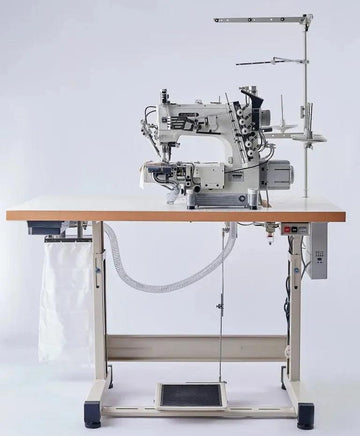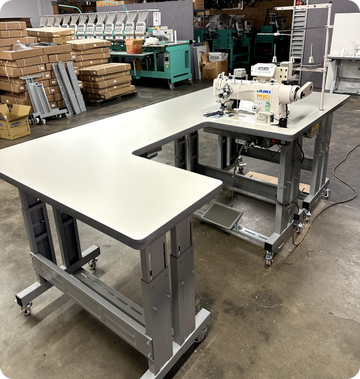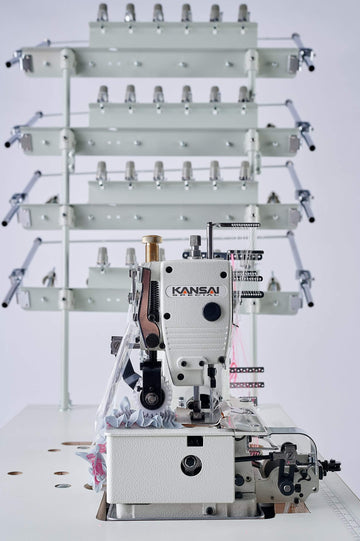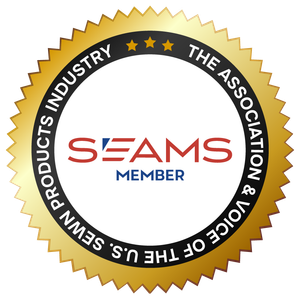Introduction
When investing in an industrial sewing machine, knowing the industrial sewing machine components is just as important as selecting the right model. If you’ve ever wondered “what are the different parts of an industrial sewing machine?”, this guide explains everything clearly. Understanding the typical industrial sewing machine parts ensures higher productivity, smoother operation, and longer machine life.
Overview of Industrial Sewing Machines
Industrial sewing machines are designed for heavy-duty use in commercial sewing environments. Unlike domestic models, they are engineered for speed, durability, and the ability to handle various fabrics, from lightweight materials to thick leather. Whether used in Los Angeles garment factories or South El Monte upholstery shops, these machines are essential for professional sewing.
Importance of Understanding Machine Parts
Each industrial sewing machine component works together to deliver precise, high-quality stitches. Knowing their functions helps operators troubleshoot issues, order correct industrial sewing machine parts name, and maintain production without costly downtime.
Definition and Types of Industrial Sewing Machines
Industrial machines can be categorized by their function:
-
Lockstitch machines – the most common type for general fabrics.
-
Overlock/sergers – ideal for edges and seams.
-
Coverstitch machines – popular in garment finishing.
-
Specialized machines – like walking foot or zigzag for leather and upholstery.
Main Components of an Industrial Sewing Machine
Machine Head and Body
The main structure that houses all mechanisms, built for strength and stability.
Needle and Needle Bar
Responsible for piercing the fabric and forming stitches. The needle bar holds the needle firmly.
Presser Foot and Presser Bar
The presser foot secures fabric, while the presser bar applies downward pressure.
Feed Dogs
Small teeth under the plate that move fabric consistently.
Thread Take-Up Lever
Regulates thread movement, preventing tangles and ensuring smooth stitching.
Bobbin and Bobbin Case
Located below the needle plate, the bobbin system provides the bottom thread for lockstitching.
Tension Discs and Controls
These adjust thread tightness for different fabrics, ensuring professional-quality results.
Stitch Length Regulator
Lets you control stitch size depending on the project.
Motor and Drive System
Powers the machine; typically mounted under the table. Modern models often include direct-drive motors for better energy efficiency.
Control Panel or Foot Pedal
The foot pedal or electronic control panel allows precise speed regulation.
Industrial Sewing Machine Table Parts
Table Surface and Work Area
Provides a stable surface for sewing operations.
U-Shaped Cutout or Recess
Designed for easy access to the needle and fabric area.
Table Legs and Frame
Supports the table and machine, ensuring stability.
Motor Mount
Hold the motor securely beneath the table.
Knee Lifter
Allows hands-free lifting of the presser foot, increasing efficiency.
Accessory Holders
Useful for keeping tools and components within reach.
Additional Components and Accessories
-
Thread Stands – keep multiple spools organized.
-
Bobbin Winders – allow fast bobbin preparation.
-
Lubrication Points – built-in oiling systems reduce wear.
-
Safety Covers – protect operators from moving parts.
Maintenance and Replacement of Parts
Cleaning and Lubrication
Regular oiling of industrial sewing machine components prevents overheating and reduces friction.
Identifying Wear Parts
Commonly replaced industrial sewing machine components include needles, bobbins, feed dogs, and tension discs.
Importance of Timely Replacement
Delaying part replacement reduces stitch quality, causes fabric damage, and lowers productivity. Always check your warranty terms when ordering genuine parts.
Conclusion
Understanding the typical industrial sewing machine parts and knowing “what are the parts of an industrial sewing machine table called” gives operators the confidence to handle any project. From the needle and presser foot to the motor and control panel, each industrial sewing machine component plays a vital role in producing high-quality stitches. Whether sewing in California factories or a small workshop in Los Angeles, keeping machines in top condition ensures maximum performance, fabric precision, and long-lasting value.










